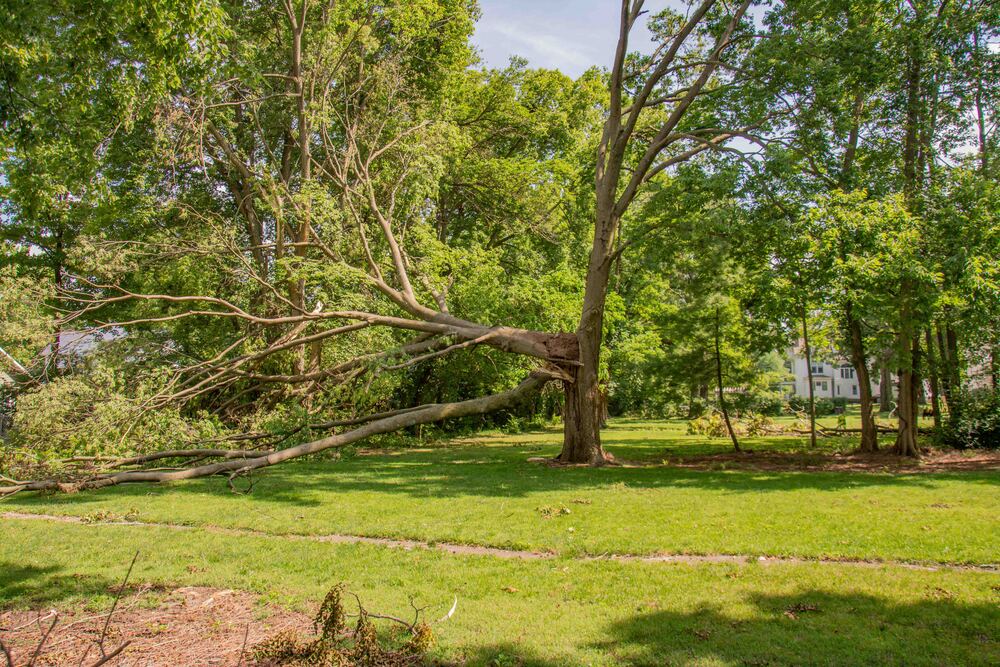What to do when trees are damaged in a windstorm

MACOMB, Ill. — Following a series of windy days and storms with high winds in central Illinois, we have received reports on large sections of trees lost, gashes left in the trunks of trees, and large splits in tree trunks. What do you do when a severe windstorm damages your landscape trees?
Obviously, during an outbreak of high winds or tornadoes, the best course of action is to seek shelter. During the storm, the landscape is on its own. After the storm has passed, it is time to evaluate your property for anything that may pose a danger to you and others. Avoid areas with downed power lines. Do NOT try to remove any limbs or debris from power lines. Anything at all involving power lines is a job for the power company.
Ensure that large shade trees are stable and that there are no hanging limbs in the trees. Hanging limbs pose an unforeseen danger as individuals surveying the damage believe they are safe until a gust of wind blows broken limbs out of a tree. Hire a certified arborist to remove hanging and damaged limbs.
It is advisable to have the arborist evaluate your landscape trees. Questions to ask of damaged trees are:
- Despite the storm damage, is the tree healthy with good growth?
- Did the trunk experience significant damage? The vascular tissue of a tree resides directly behind the bark. If this critical tissue is severed, a tree cannot move water and nutrients through its system.
- Are major limbs broken? The larger the lost limb, the harder it will be for the tree to seal off that wound.
- Is the tree desirable, or is it prone to problems? Sometimes storms present opportunities to replace a problem tree.
- Is the overall shape of the tree still intact? For instance, if a white pine loses the central leader, the tree will lose its pyramidal shape and become a hazard in the future.
When it comes to identifying qualified professionals, don’t get scammed. Many fly-by-night tree trimmers arrive with little experience in proper tree care after large disasters. However, many Good Samaritan arborists do travel to disaster-stricken areas to aid in recovery efforts. Here are some guidelines to distinguish the qualifications of a professional arborist:
Determine what business they are associated with. For those arborists from out of town, inquire where they are from and check online or their local listings if their company is listed, typically under Tree Service.
Ask to see a current certificate of insurance showing they are fully insured for property damage, personal liability, and workers’ compensation. Every arborist or tree trimmer should have this in their glovebox.
Ask about professional associations. Is anyone on staff a member of the International Society of Arboriculture (ISA), National Arborist Association (NAA), Illinois Arborist Association (IAA), or American Society of Consulting Arborists (ASCA)?
If you are removing landscape debris with a chainsaw, remember these three important items:
- Wear proper safety gear- gloves, chaps, ear protection, and a helmet with a face shield.
- Never cut anything that is above your waist.
- Your feet should never leave the ground when using a chainsaw. This means no ladders.
Miss Clipping Out Stories to Save for Later?
Click the Purchase Story button below to order a print of this story. We will print it for you on matte photo paper to keep forever.

